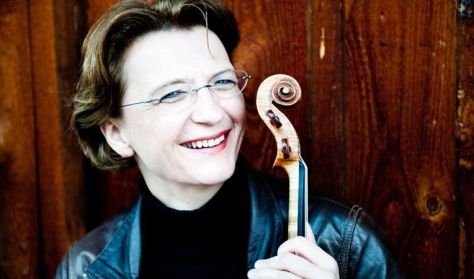
Schumann zongorás kamarazenéje / 3. (Összkiadás élőben)
Összkiadás élőben - Schumann
Schumann zongorás kamarazenéje/3
több

Összkiadás élőben - Schumann
Schumann zongorás kamarazenéje/3
több
Ön egy múltbeli eseményre keresett. Kérjük, válogasson aktuális kínálatunkból a Jegy.hu keresőjében!
Utolsó előadás dátuma: 2019. március 27. szerda, 19:00
Schumann: Öt darab népies stílusban, op. 102
Schumann: Báljelenetek, op. 109
SZÜNET
Schumann: c-moll zongoranégyes, WoO 32
Antje Weithaas (hegedű), Szűcs Máté (brácsa), Várdai István (cselló), Simon Izabella, Várjon Dénes (zongora) A sorozat szerkesztője Várjon Dénes
1848/49 tele és a rákövetkező hónapok meghökkentően termékeny időszaknak bizonyultak Schumann életében. Ekkor született, változatos hangszerösszeállítású kamaradarabjai rendkívül koncentrált munkáról tanúskodnak; a gordonkára és zongorára komponált Öt dal népies stílusban megírása is csupán három napot vett igénybe. Egyszerű szerkezete, biedermeier képeinek sora bensőséges házimuzsikálások hangulatát idézi. Utóbbi igaz a zongora-négykezesre írott Báljelenetekre (1851) is, amely a kor divatos táncainak – Polonaise, Walzer, Ungarisch, Française, Mazurka, Ecossaise, Walzer – mutatós füzére.Az előbbiekkel ellentétben a c-moll zongoranégyes (1829) a pályakezdő Schumann műve: befejezésekor mindössze 19 éves volt. Naplójából tudható ugyanakkor, hogy még évtizedekkel később is élénken emlékezett a munkafolyamat egy meghatározó pillanatára: a III. tétel középrészének írásakor „egy a korábbi zenéétől különböző szellem [t.i. a romantika szelleme] nyilvánult meg nekem, s egy új, költői élet tűnt feltárulni előttem”. Ennek ellenére a művet végül nem tartotta kiadásra méltónak: közreadása egészen 1979-ig váratott magára.
„A legnagyobb nevű külföldi zongorista sem kelt nagyobb érdeklődést, mint Ránki Dezső” – írta 1970-ben a zenekritikus Pernye András a…
tétel a kosárban
összesen:
Lejárt a vásárlási időkorlát! Kérjük, állítsa össze a kosarát újra!